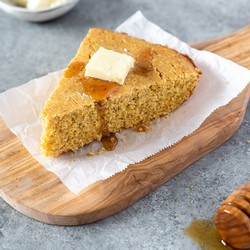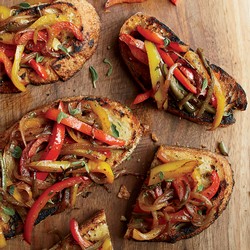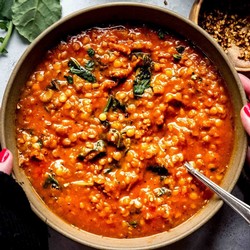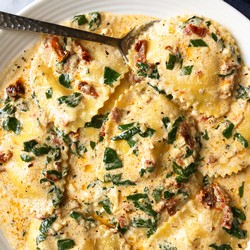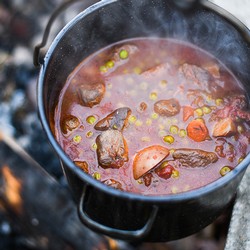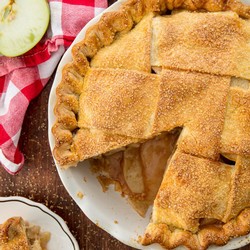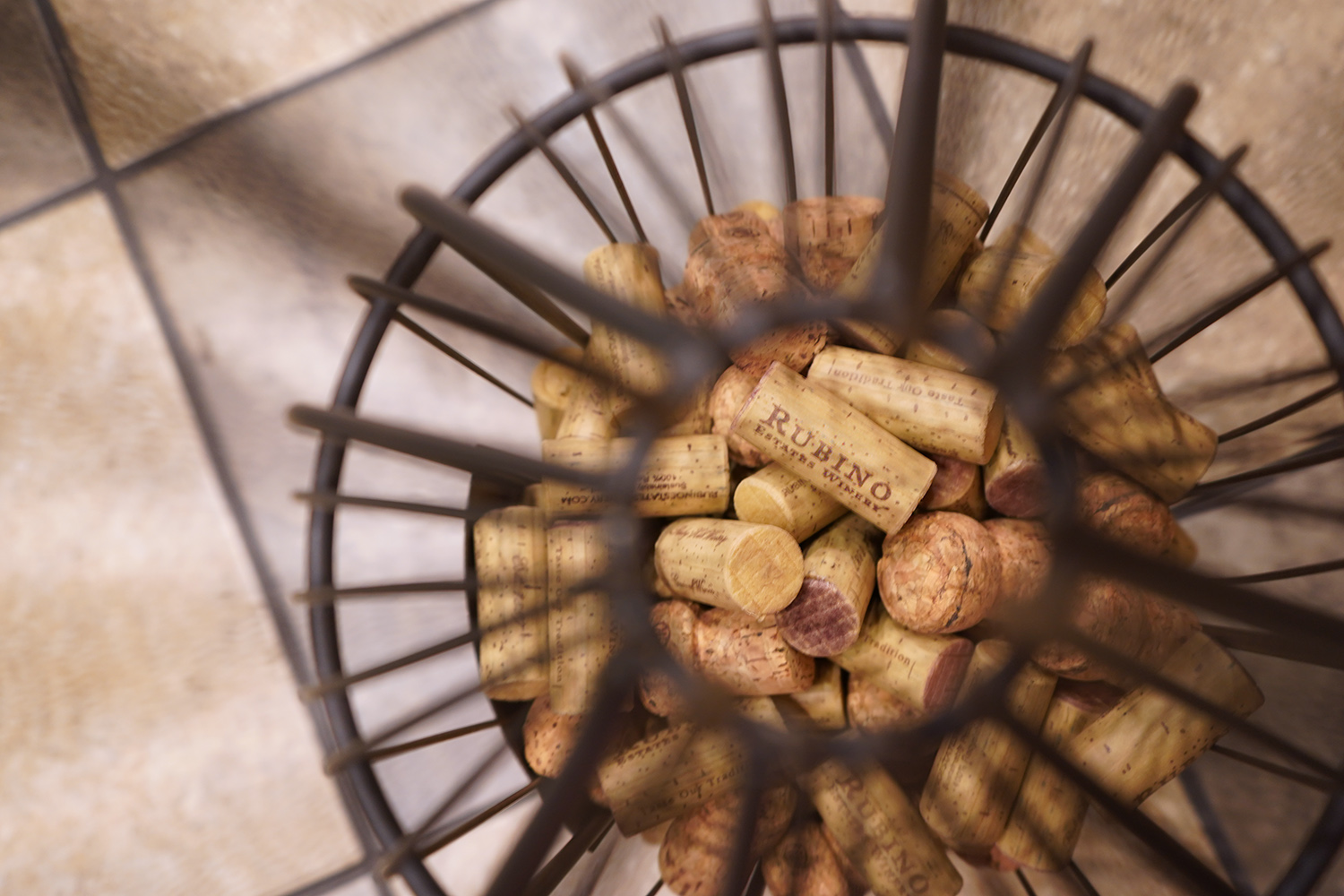November Release: A Dining Guide
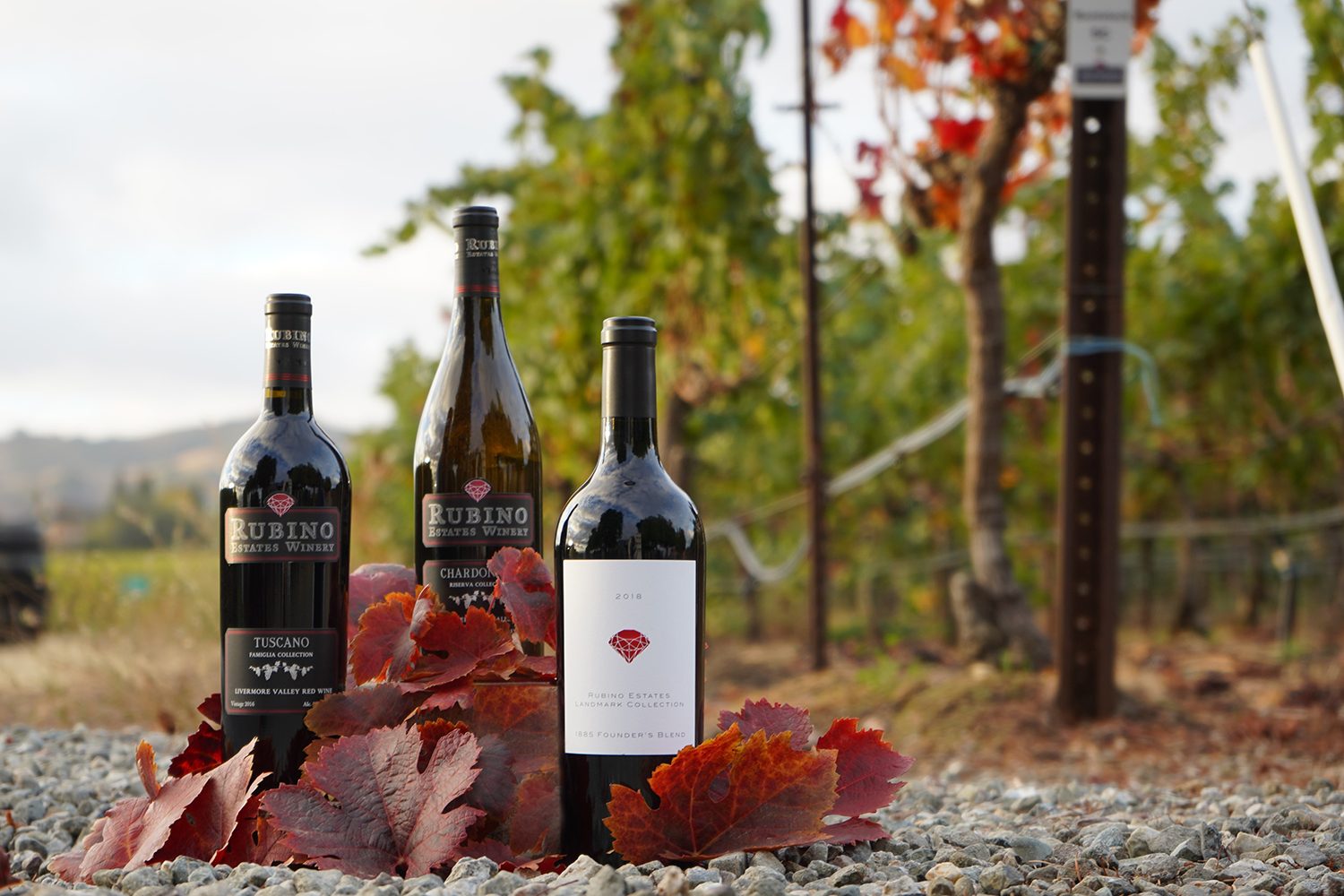 Our November release has restocked our members’ cellars, so now it’s time to get cooking. These pairings are guaranteed to make your wines shine better than ever. Your taste buds will sing, we promise!
Our November release has restocked our members’ cellars, so now it’s time to get cooking. These pairings are guaranteed to make your wines shine better than ever. Your taste buds will sing, we promise!
2018 Landmark Chardonnay - Butter Maple Cornbread
This warm American classic with a maple-essenced twist is a perfect companion for the smoothly creamy sips of our Landmark Collection Chardonnay. Don’t forget to dress your cornbread generously with whipped honey butter!
Recipe from Flavor the Moments
2018 Riserva Sangiovese - Bruschetta with Tuscan Peperonata
This classic Tuscan dish of sweet bell peppers and ripe tomatoes will take your bruschetta game to the next level. Enjoy alongside our brand new 2018 Sangiovese, an Old World varietal that shines brightest alongside tomatoes.
Recipe from Food & Wine
2017 Landmark Sangiovese - Sausage and Lentil Soup
If you need something to warm your heart this fall, try this hearty soup. We recommend a fennel sausage to bring out the best of our bold, cherry-red Landmark Collection Sangiovese for a pairing that will have you feeling ready for the holidays in no time.
Recipe from Platings + Pairings
2016 Tuscano - Sun Dried Tomato and Spinach Ravioli
Our Club-Exclusive Tuscano is a luxurious red blend with deep, warm cherry pie-esque notes that provides the perfect partner for saucy Italian dishes. Enjoy the flavor-packed sun-dried tomatoes and savory sauce in this delectable dish.
Recipe from Supper with Michelle
2018 Landmark 1885 Founder’s Blend - Hearty Venison Stew
The quintessential cold-weather food with a touch of the wild is a perfect companion for the gravitas of our Landmark Founder’s Blend. This wine brings together Barbera, Petit Verdot, Petite Sirah, and Cab to compliment the venison like nothing else can.
Recipe from Be Wild Eats
2017 Riserva Chardonnay - Classic Apple Pie
Our newest vintage of Riserva collection Chardonnay is an elegant symphony of light honey, citrus, and wildflowers. Sip on this liquid gold alongside a generous slice of Apple pie (a-la-mode, we recommend) and you’ll be ready for a second dessert soon!
Recipe from Delish
If you're not a member with us and want to join the club, click here to learn more!
The Blending Hero: Merlot
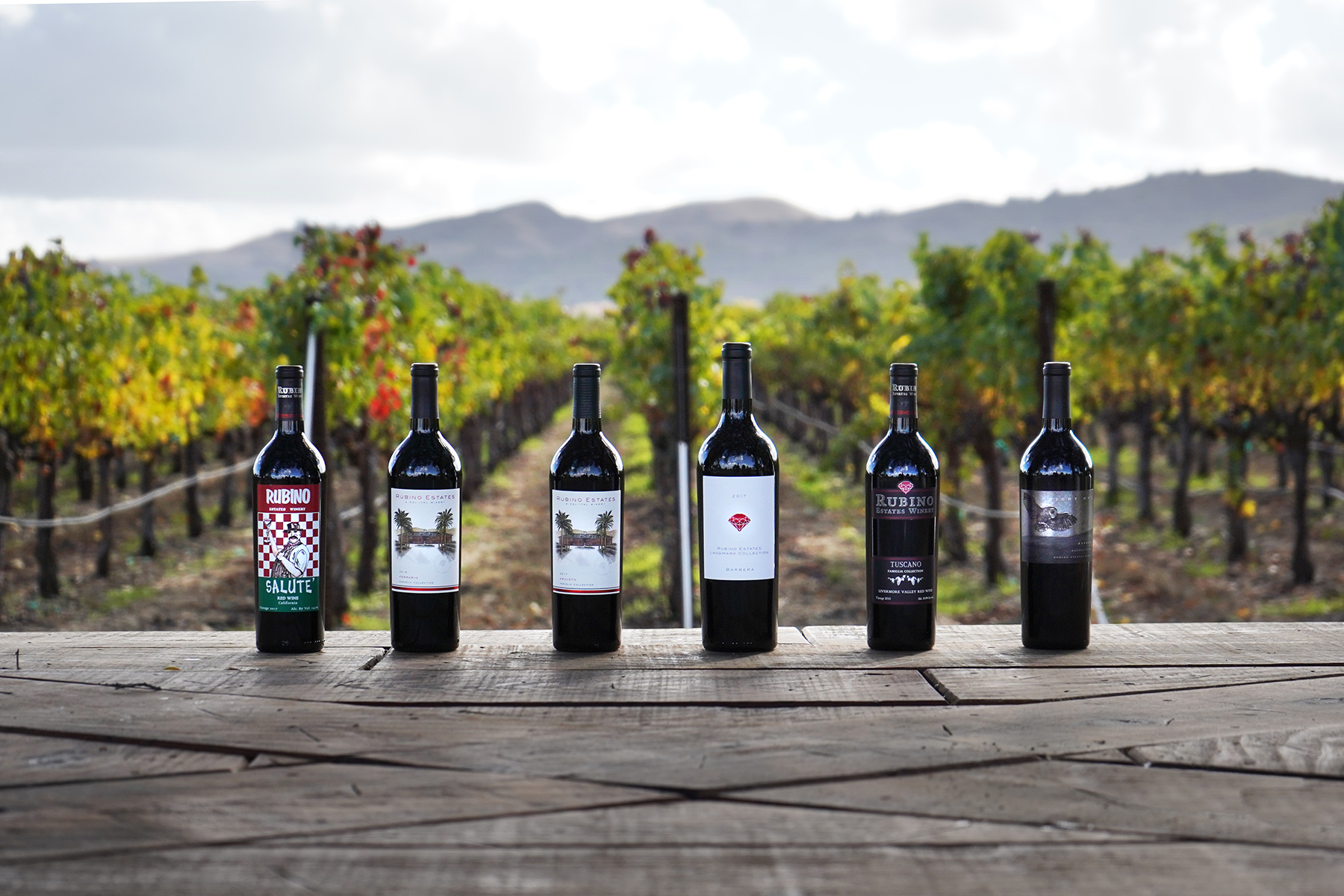
Here at Rubino Estates, we believe in crafting unique, approachable wines that marry the styles and flavors of the old and new world. The 6 wines shown above encompass a wide range of styles, profiles, and price, and yet they share one thing in common. A single, unsung varietal plays a supporting role in all six of these wines. The everyday hero of this story is Merlot. When you enjoy our current vintages of Salute Red, Night Owl Barbera, Ferrario, Tuscano, Amuleto, or our Landmark Barbera, you enjoy a tiny percentage of Merlot—a percentage that is there for a reason. Why does this varietal play a part in so many of our wines? This coming Sunday, November 7th, is International Merlot Day, so we're taking time to look at the way Merlot makes our wines better.
Merlot is an early-ripener with a soft flesh, and is very commonly found alongside the classic late-ripening, fiercely tannic Cabernet Sauvignon. Merlot is the most widely planted Varietal in France, where it is oven blended with Malbec, Cabernet Franc, and other varietals to add both body and softness. In Italy, Merlot is used for softness in some Sangioveses and other traditional high-acid Italian varietals.
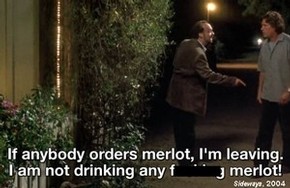 In the US, the story of Merlot has been heavily influenced by pop culture. Merlot saw a wild rise in popularity after 60 Minutes reported on the French Paradox—the observation that heart disease is low in France, even though cheese and red wine make up a large proportion of the average diet. As a traditional French wine, this boosted Merlot’s public appeal. The film Sideways, released in 2004, featured a Pinot Noir snob who famously rejected Merlot in all of its forms. This film has been subsequently credited with an undeserved decline in the popularity of Merlot!
In the US, the story of Merlot has been heavily influenced by pop culture. Merlot saw a wild rise in popularity after 60 Minutes reported on the French Paradox—the observation that heart disease is low in France, even though cheese and red wine make up a large proportion of the average diet. As a traditional French wine, this boosted Merlot’s public appeal. The film Sideways, released in 2004, featured a Pinot Noir snob who famously rejected Merlot in all of its forms. This film has been subsequently credited with an undeserved decline in the popularity of Merlot!
When Merlot came to California, it was often bottled alone as a single varietal wine. Though this is not uncommon now, Winemakers are more likely to reach back to the Merlot’s roots as a blending wine. Merlot adds delicious full-bodied softness as well as a toothsome fruitiness wherever it is featured. When used in slightly higher percentages, Merlot also adds a detectable delicate aroma and freshness.
At its core, Merlot is a refined and delicate supporting actor, working in the background so that other varietals can put on their best show. Single varietal wines and red blends are a collaboration of flavors, aromas, textures, and more. Don’t forget about the little hero Merlot!
Shop our blends and single varietals with Merlot support:
Salute Red · Night Owl Barbera · Ferrario · Tuscano · Amuleto · Landmark Barbera
Petite Sirah Spotlight
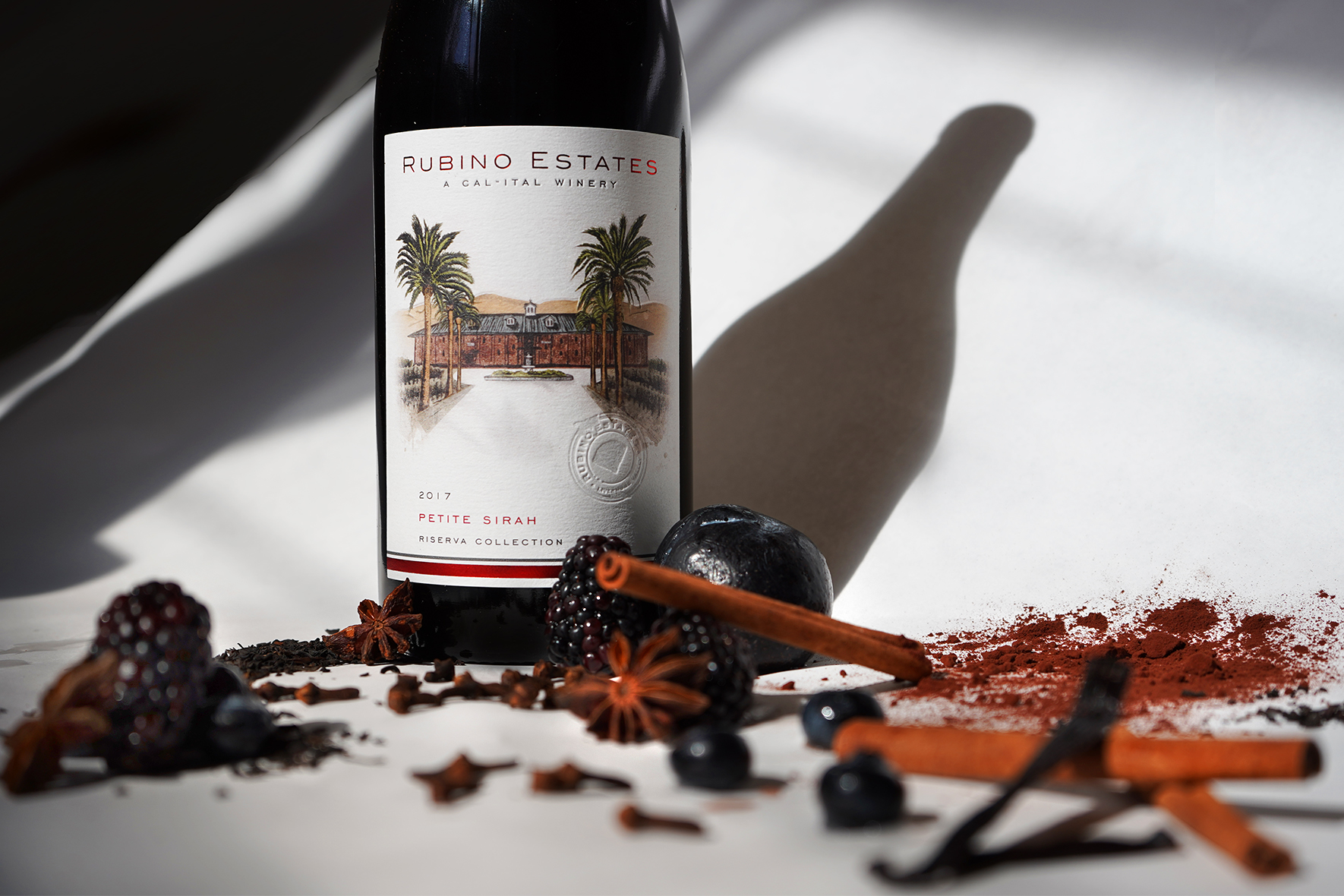 As October winds down, we are taking time this week to celebrate our Wine of the Month: Riserva Petite Sirah. Not only has this delectable wine earned a 94-point score from Wine Enthusiast, it has gained popularity and attention from our beloved members and guests. This deep, rich red is especially perfect this time of year as the weather encourages us to stay inside and get cozy. This wine is overflowing with everything you want in a Petite Sirah, dense with flavor and balanced body. If you haven't had a chance to taste our 2017 Riserva Petite Sirah, you can expect to be delighted when you do. Generous aromas of cocoa, baking spices, vanilla and dark fruit adorn the nose of this wine, leading into a swirling celebration on the palate. Luxurious flavors of tea leaves and tamarind mingle together before arriving at a finish with a satisfying finale of cocoa, cream and vanilla flavors.
As October winds down, we are taking time this week to celebrate our Wine of the Month: Riserva Petite Sirah. Not only has this delectable wine earned a 94-point score from Wine Enthusiast, it has gained popularity and attention from our beloved members and guests. This deep, rich red is especially perfect this time of year as the weather encourages us to stay inside and get cozy. This wine is overflowing with everything you want in a Petite Sirah, dense with flavor and balanced body. If you haven't had a chance to taste our 2017 Riserva Petite Sirah, you can expect to be delighted when you do. Generous aromas of cocoa, baking spices, vanilla and dark fruit adorn the nose of this wine, leading into a swirling celebration on the palate. Luxurious flavors of tea leaves and tamarind mingle together before arriving at a finish with a satisfying finale of cocoa, cream and vanilla flavors.
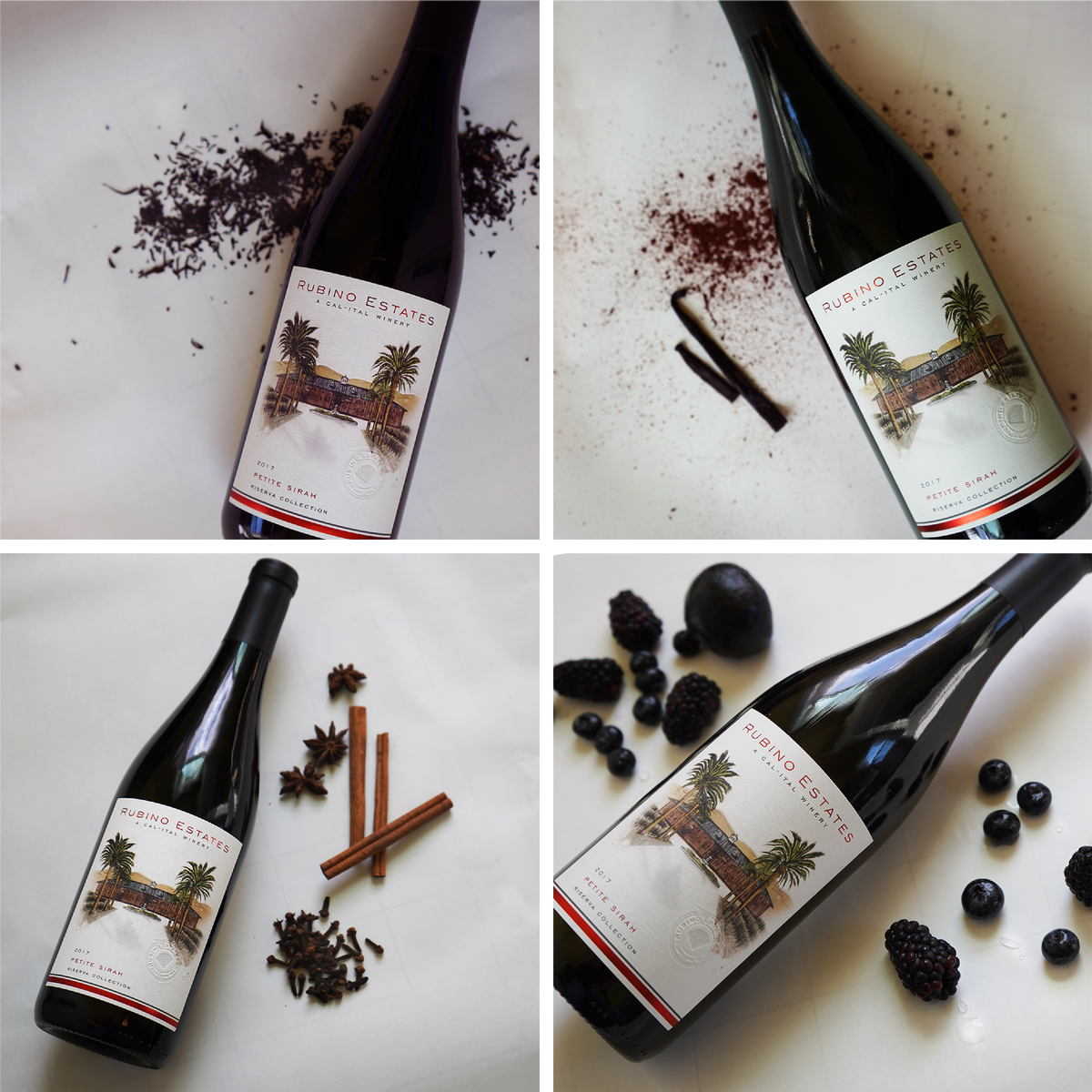
Petite Sirah is anything but “petite” on the palate. This name was earned in the late 1800s due to the size of the grapes themselves in comparison to Syrah grapes. The small size of the grapes and the thickness of the skin is the source of the deep, iconic tannin. Petite Sirah is known for its density, boldness, and body, and rightly so. The complexity and power within each bottle of our Petite Sirah are a product of varietal, terroir, and winemaking finesse. Though Petite Sirah hails from France, the Californian climate is a happy place for the vines, and the wine itself has found more of a foodhold in New World markets rather than finding popularity in the Old World. Today, it is the 6th-most planted red varietal in California, a number which, in our opinion, should go up.
Our 2017 Riserva Petite Sirah is an orchestra of flavor, with everything from tea leaves to dark fruit and baking spices topped with vanilla and cocoa. Don’t miss this underappreciated varietal. You might just find a new favorite!
Creepy Crawly Appreciation
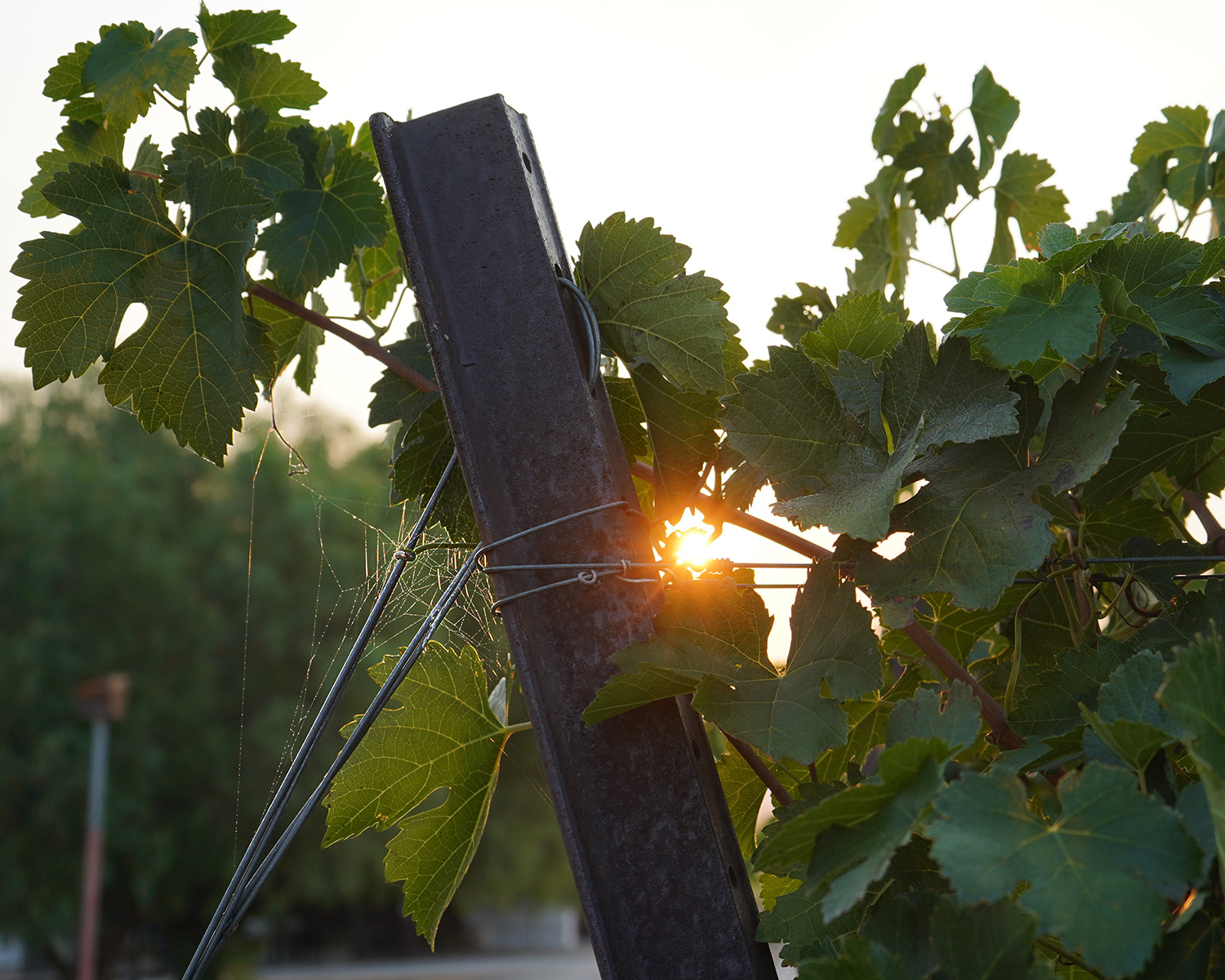 As the end of October approaches, we like to refer to this time as the "Spooky Season!" In the spirit of this season, we want to express our appreciation for the creepy crawly critters that reside around the Estate. From snakes to spiders, it’s time to share our ode to the odious!
As the end of October approaches, we like to refer to this time as the "Spooky Season!" In the spirit of this season, we want to express our appreciation for the creepy crawly critters that reside around the Estate. From snakes to spiders, it’s time to share our ode to the odious!
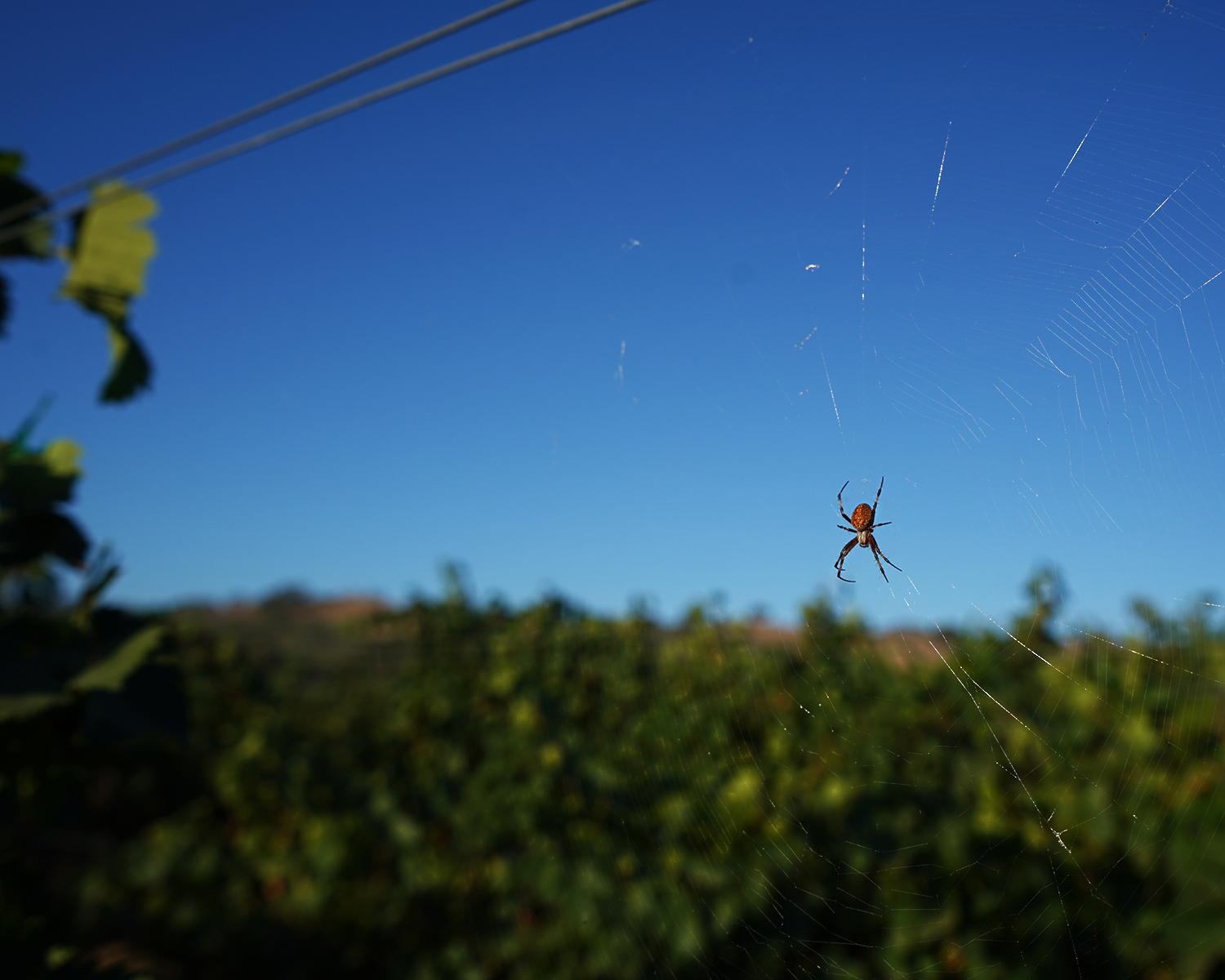 Let’s start with SPIDERS! These little beauties have a bad rap, but that is mostly undeserved. One study out of UC Berkeley found that most spiders (98%) you come across in daily life are completely safe! Additionally, spiders eat the bad bugs that are threats to people and grapevines. In the vineyard, spiders are a fantastic insecticide, making them a natural and sustainable alternative to chemical treatments.
Let’s start with SPIDERS! These little beauties have a bad rap, but that is mostly undeserved. One study out of UC Berkeley found that most spiders (98%) you come across in daily life are completely safe! Additionally, spiders eat the bad bugs that are threats to people and grapevines. In the vineyard, spiders are a fantastic insecticide, making them a natural and sustainable alternative to chemical treatments.
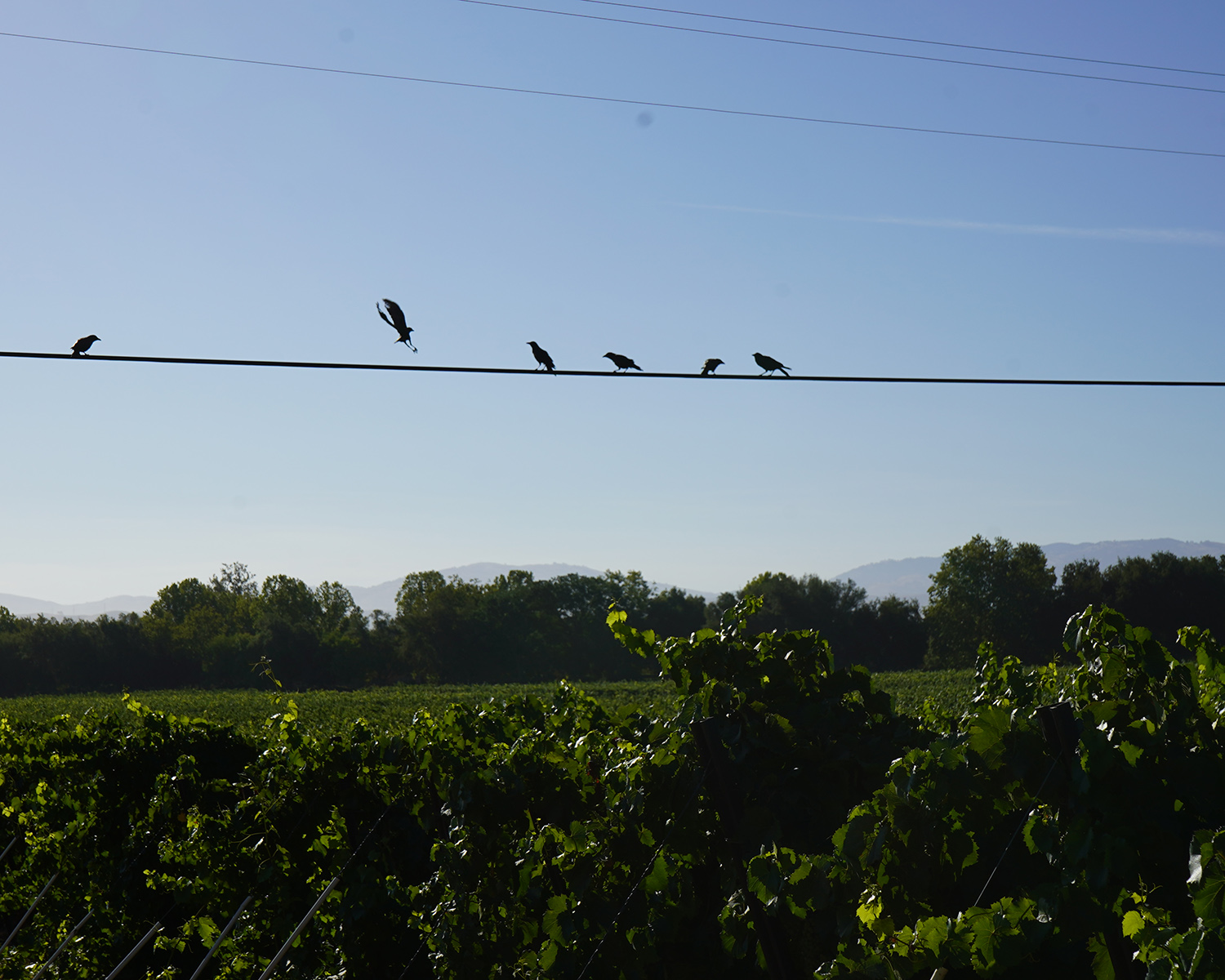 What about the spooky CORVID fiends, crows and ravens? These birds are truly worth admiring. In addition to a wonderful wild ambience, crows cast a watchful eye over the vineyards. When we drop fruit a month prior to harvest, our corvid cleanup crew is quick to clear the rows of the pruned clusters. With a complex social system and peculiarly intriguing intelligence, these avian watchers are welcome to call the Estate their home.
What about the spooky CORVID fiends, crows and ravens? These birds are truly worth admiring. In addition to a wonderful wild ambience, crows cast a watchful eye over the vineyards. When we drop fruit a month prior to harvest, our corvid cleanup crew is quick to clear the rows of the pruned clusters. With a complex social system and peculiarly intriguing intelligence, these avian watchers are welcome to call the Estate their home.
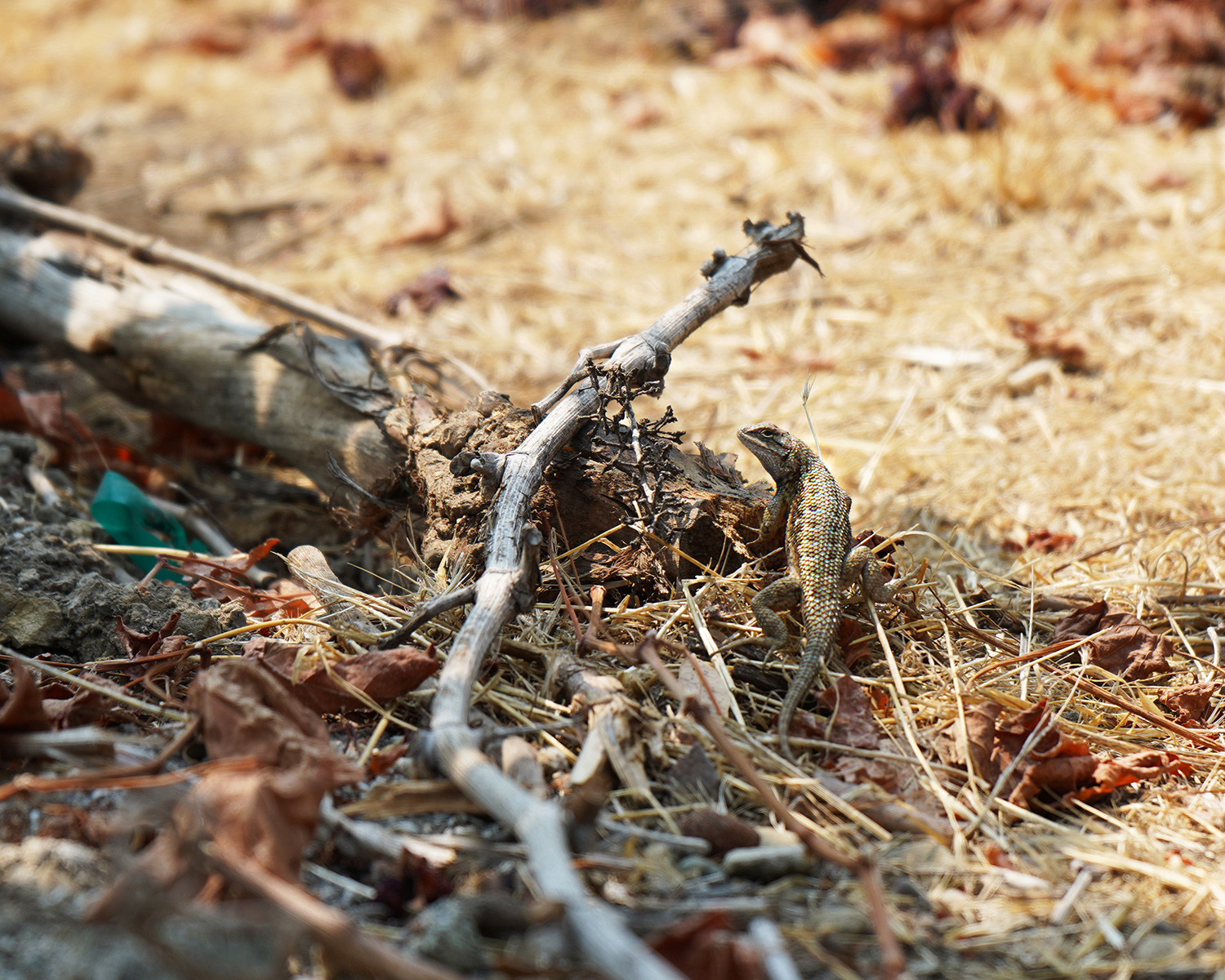 Next, we consider the LIZARDS who can often be spotted scuttling across the rocky soil in the afternoon like the fellow above who was sunning himself among the Petite Sirah vines. In addition to being completely harmless to humans, our lizards are excellent hunters of little pests like slugs and harmful bugs. Lizards are also very delicate creatures, sensitive to soil pollutants (such as chemical treatments) and so the presence of lizards is a good indicator of the vineyard’s health.
Next, we consider the LIZARDS who can often be spotted scuttling across the rocky soil in the afternoon like the fellow above who was sunning himself among the Petite Sirah vines. In addition to being completely harmless to humans, our lizards are excellent hunters of little pests like slugs and harmful bugs. Lizards are also very delicate creatures, sensitive to soil pollutants (such as chemical treatments) and so the presence of lizards is a good indicator of the vineyard’s health.
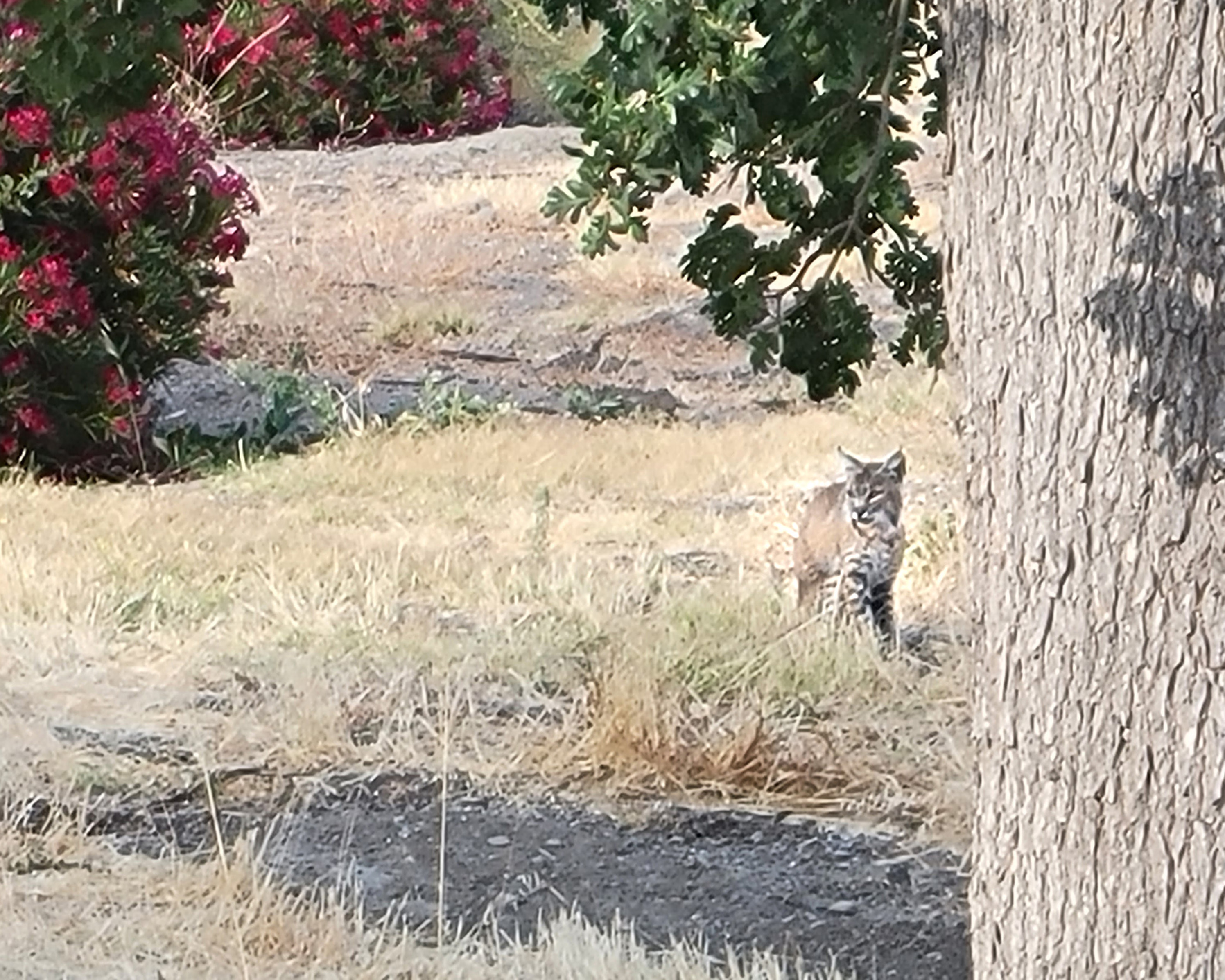 We also look to the elusive BOBCATS who make occasional appearances in the vineyard. This photo was taken by our Winemaker, whose home is situated within the Estate vineyards. These beautiful creatures are a top predator for larger pests like squirrels. They are also highly intelligent and naturally balance the food chain by reproducing very sparingly.
We also look to the elusive BOBCATS who make occasional appearances in the vineyard. This photo was taken by our Winemaker, whose home is situated within the Estate vineyards. These beautiful creatures are a top predator for larger pests like squirrels. They are also highly intelligent and naturally balance the food chain by reproducing very sparingly.
 The presence of VULTURES is also an important one. Just as corvids pick up decaying fruit, the vultures take care of the even bigger messes with efficiency. This natural janitorial crew is a sustainable garbage disposal, with thorough and quick cleanup. Their work is vital to prevent the spread of decay-borne diseases and, of course, odor.
The presence of VULTURES is also an important one. Just as corvids pick up decaying fruit, the vultures take care of the even bigger messes with efficiency. This natural janitorial crew is a sustainable garbage disposal, with thorough and quick cleanup. Their work is vital to prevent the spread of decay-borne diseases and, of course, odor.
 Lastly, a few slippery, slithery SNAKES also call our soil their home. The scaly resident above was spotted just outside his hole in the Cabernet block on a chilly morning. These creatures reduce the use of pollutants and preserve soil health by preying on mice and other ground pests. Additionally, snakes are an important part of ecological balance. They eat the little pests, but also become snacks for birds of prey.
Lastly, a few slippery, slithery SNAKES also call our soil their home. The scaly resident above was spotted just outside his hole in the Cabernet block on a chilly morning. These creatures reduce the use of pollutants and preserve soil health by preying on mice and other ground pests. Additionally, snakes are an important part of ecological balance. They eat the little pests, but also become snacks for birds of prey.
As a Certified California Sustainable Vineyard, we are careful to pay attention to the health of our vineyard and the critters that call it home. Though the heebie-jeebies may strike, try to thank a creepy crawly today!
Old Cork, New Cork
Whether you are new to the wine scene or have been enjoying vino for decades, you probably have some idea of what different bottle closures mean to you. There are several options commonly seen throughout the wine world and the industry seeks to balance their elegance, budget, and environmental impact. Whether you turn up your nose at a screw cap or break a corkscrew in a plastic composite stopper, a brief look into what these closures mean is a fascinating investigation.
Natural Corks
These classic stoppers became the gold standard for sealing wines in the 1800s, appropriately around the same time that modern corkscrews were developed. Natural cork is harvested from a variety of oak colloquially referred to as a "cork oak" which regenerates its spongy bark continually and can be harvested about once every decade. Producing natural corks can be a resource-intensive process, but the material is biodegradable. Some wine experts favor natural corks for their long-term aging wines because the tiny pores in the material allow miniscule amounts of air through, allowing the wine to develop over the years. On the other hand, this means that with the variation in the product there is a possibility for a variety of cork taints, making beautiful wine undrinkable.
Composite Corks
Composite corks come in several different forms depending on the budget and preferences of the winemaker. These corks are also sometimes referred to as agglomerated corks, and incorporate ground up cork particles, sometimes mixed with other similar substances. These stoppers behave more like natural cork than other closure options, but with more consistency within the product. Champagne corks are traditionally composite corks, made of ground up natural corked and sealed with a food-safe adhesive. Most agglomerated corks are best used in wines that will be enjoyed young, as they break down more quickly than natural corks, though the technology continues to develop.
Screw Caps
Though plagued by a stigma of being sub-par, screw caps do offer some advantages. One of the biggest risk factors in aging wine is oxidation, when too much air interacts with the wine and causes spoilage or even slightly off flavors. In the research done to compare and contrast various mainstream wine closures, screw caps have been shown to be the most effective for keeping wines safe from air. If you are going for a screw cap wine, white or rosé wines can be enjoyed for more years, as the screw top sealed bottles preserve the aromatic dynamics of the wine. There is some question if screw caps are the best for red wines because reds benefit from a tiny seep of oxygen, as referenced above in the discussion of natural corks.
Synthetic Corks
As with composite corks, there are several varieties of synthetic corks that are widely available. Some synthetic corks are made from malleable plastics that mimic the porous nature of natural cork without the variability or risk of cork taint. Other synthetic cork varieties create this effect using only natural, biodegradable materials. Here at Rubino Estates, almost every wine is sealed with cork made from sustainable materials derived from sugarcane. This is one of many measures we take to do our part in reducing negative environmental impact at every stage of the winemaking process.
Essential Books About Wine
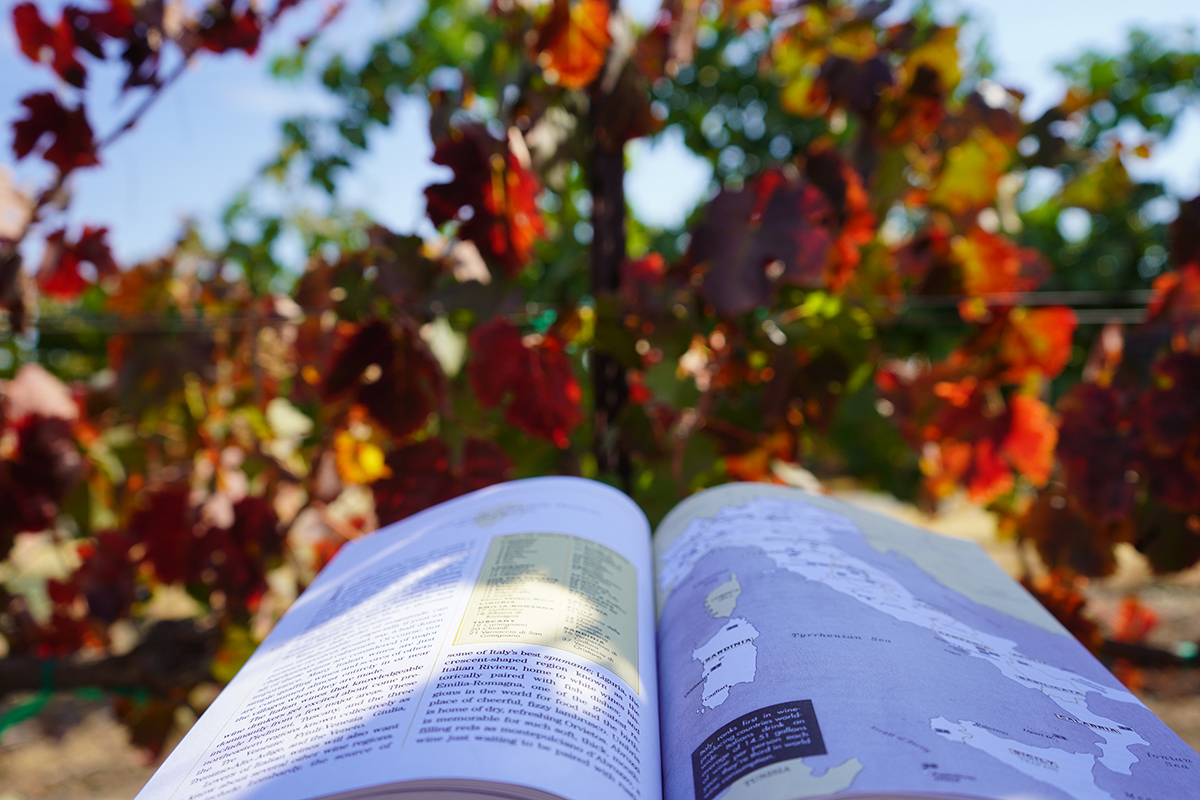 If you’re not already a bookworm, fall is the perfect time to get a reading habit started. There’s nothing cozier than a comfy sofa, a good book, and a glass of wine. This week, we’re bringing you book recommendations for wine lovers! There is something for everyone.
If you’re not already a bookworm, fall is the perfect time to get a reading habit started. There’s nothing cozier than a comfy sofa, a good book, and a glass of wine. This week, we’re bringing you book recommendations for wine lovers! There is something for everyone.
If you want a fiction book:
Nose: A Novel
This witty mystery is set in the wine Country of Northern California (near and dear to our hearts) and swirls with discussion of excellent wine. Enjoy it as a “delectable, and fast-paced novel that, like a good Cabernet, only grows truly enjoyable once opened.”
If you want a coffee table book:
The Impossible Collection of Wine
If you’re looking for a book that is big, beautiful, and makes both guests and yourself say “wow” then this book is for you! This collection of wines imagines a cellar that doesn’t exist, a cellar full of the best vintages of the best wines of all time.
If you want a good book for beginners:
Wine Simple: A Totally Approachable Guide from a World-Class Sommelier
This book is exactly what it promises to be! If you feel like diving into the world of wine but you aren’t sure where to start, crack open this book. Enjoy rich descriptions in common language without any pretentious flair. Wine is meant to be enjoyed!
If you want a book for quick reference:
The Wine Bible
This award-winning book is bursting at the seams with all the info you could hope for, broken down by region and varietal the world over. Most of all, it’s entertaining! Next time you pour a glass for a guest, pull out this book too, and let it do the talking.
If you want a book of science:
Proof: The Science of Booze
For our brainy wine lovers, we recommend diving into the processes behind crafting your favorite beverages. With a little bit of curiosity, wonder, and humor, you’ll get a peek into the science of what goes on behind the scenes and under the microscope.
If you want a book for everyone:
Wine Folly: The Essential Guide to Wine
From the creators of the Wine Folly website, this book is fun and full of information that brings your experience of wine to the next level. Whether you are a beginner or a seasoned wine snob, you are sure to enjoy the easy and fascinating reading inside.
Whether you're looking for information or just a good time, there's a book for you. Happy reading!
What does your reading list look like? Show us @RubinoEstates.
Spaghetti & Meatballs with Petite Sirah
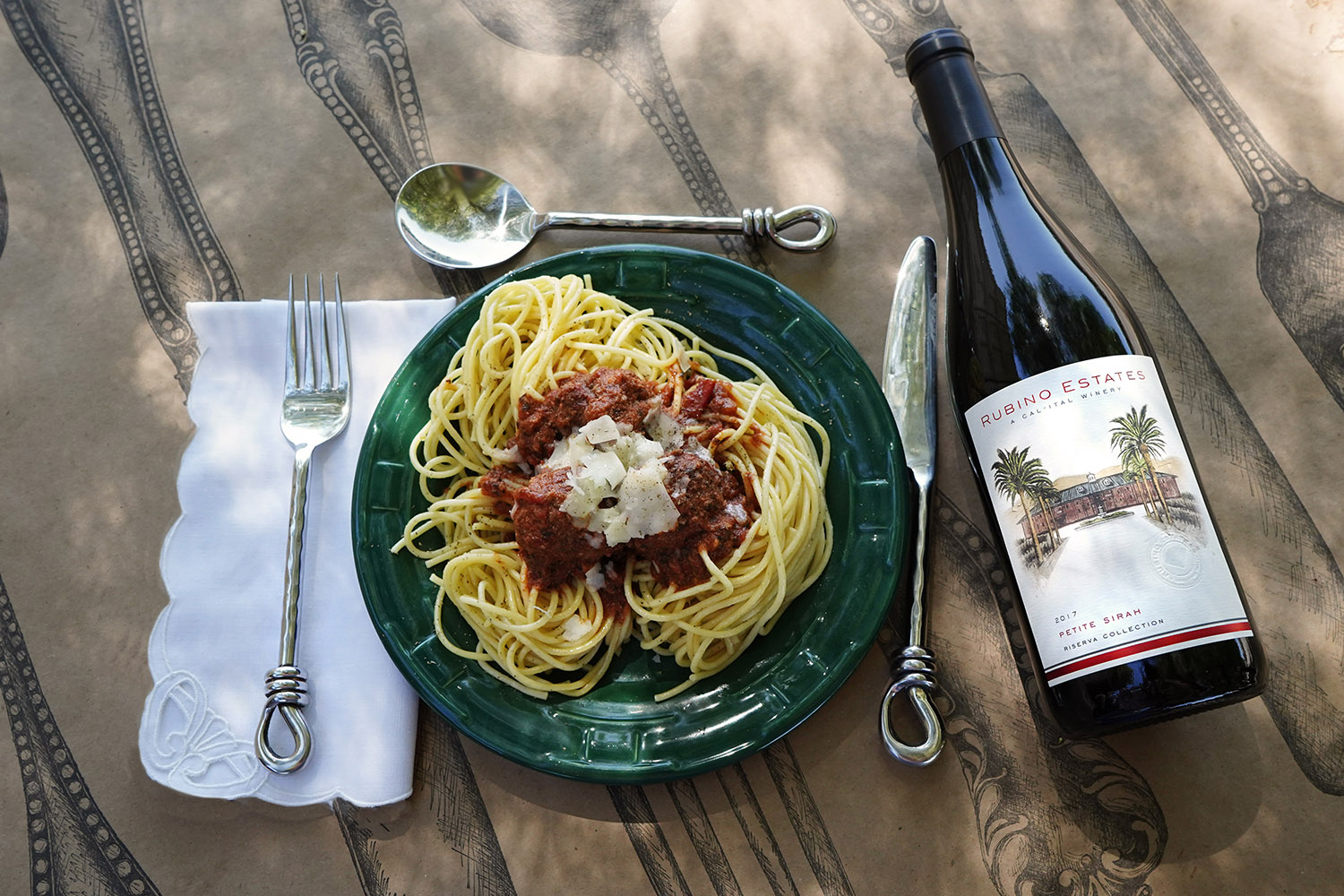 Now that it's October, we firmly believe that it is the perfect time to pull out all of our favorite comfort food recipes. From rich stew to pumpkin pie, we're ready for the cuisine of autumn. This week, we are using this as an excuse to take advantage of our new Wine of the Month and cook up our favorite slow cooker Petite Sirah Meatballs. Full of flavor and lots of love, these meatballs are easy and so delicious you'll need another helping. Buon appetito!
Now that it's October, we firmly believe that it is the perfect time to pull out all of our favorite comfort food recipes. From rich stew to pumpkin pie, we're ready for the cuisine of autumn. This week, we are using this as an excuse to take advantage of our new Wine of the Month and cook up our favorite slow cooker Petite Sirah Meatballs. Full of flavor and lots of love, these meatballs are easy and so delicious you'll need another helping. Buon appetito!
Rubino Estates Slow Cooker Meatballs
Ingredients
- For the Meatballs
- 1 lb ground wagyu beef
- 1 lb ground pork
- 2 eggs
- ¼ cup Italian bread crumbs
- ¼ cup parmesan cheese
- 1/2 cup finely chopped sun-dried tomatoes
- 1/2 teaspoon smoked salt
- 4 cloves of garlic, minced
- 1 teaspoon dried parsley
- ¼ teaspoon dried basil
- ¼ teaspoon dried fennel
- ⅛ teaspoon dried oregano
- pinch red pepper flake
- For the Sauce:
- 24 ounces of preferred red pasta sauce (yes, store bought is fine!)
- ½ cup Rubino Estates Riserva Petite Sirah
- 2 whole bay leaves
Instructions
- In a large bowl, thoroughly combine all ingredients for the meatballs, making sure to completely incorporate each ingredient. We recommend using your hands, and washing thoroughly afterward.
- Add the sauce, Petite Sirah, and bay leaves to a large slow cooker set to low and stir.
- Using your hands or a scoop, shape the meat into uniform meatballs and place them into the sauce.
- When all of the meatballs have been placed into the sauce mixture, cover and let cook on low for 6-8 hours. If you're in a hurry, cook on high for 4 hours.
(click here for a downloadable recipe card!)
We like to serve these with spaghetti because we appreciate a classic! Top with a hearty helping of fresh parmesan and fresh cracked black pepper, and your dish will shine.
If you're as hungry as we are now, then it's probably time to take advantage of the
wine of the month sale for yourself! Our Riserva Petite Sirah is worth it. 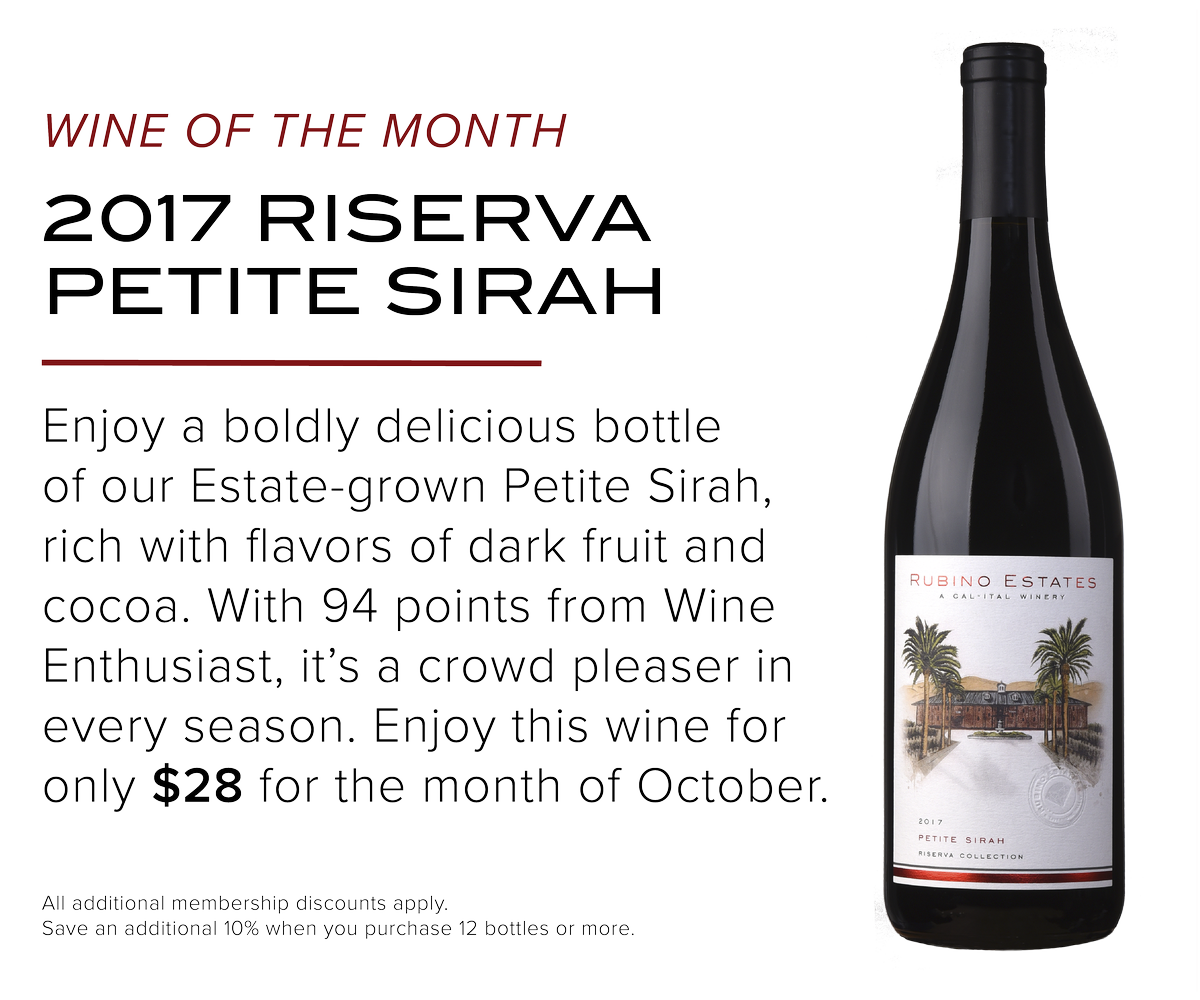
Using Coffee to Find Your Ideal Wine
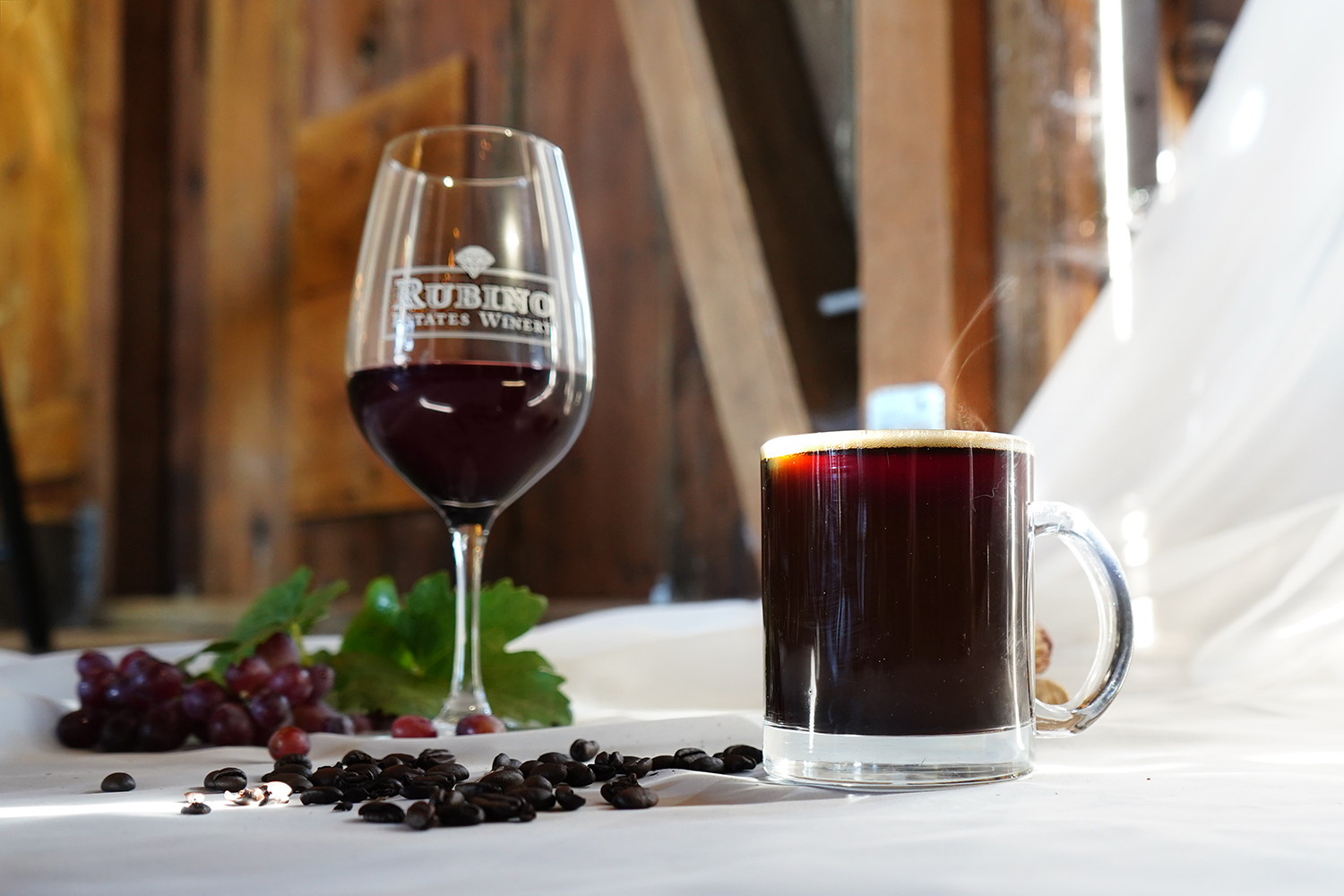 Now that it is officially fall, we feel that it’s time to cozy up with a warm, spiced coffee in the mornings and a lovely glass of wine in the evenings. To celebrate the return of the cozy season, we’ve developed a guide to what wine you may enjoy based on your coffee beverage of choice for fall.
Now that it is officially fall, we feel that it’s time to cozy up with a warm, spiced coffee in the mornings and a lovely glass of wine in the evenings. To celebrate the return of the cozy season, we’ve developed a guide to what wine you may enjoy based on your coffee beverage of choice for fall.
If you like Cold Brew with Cream -
Try our Landmark Chardonnay! Enjoy the smoothest sips enhanced by a delicious creaminess on the palate. These chilled drinks are especially enjoyable in the balmy California autumn.
If you like a Locally Roasted Pour-Over -
You might like our critically acclaimed Club-Exclusive Tuscano. Crafted from a blend of Barbera and Cabernet with careful touches of Petit Verdot, Sangiovese, and Merlot, the experience of the Tuscano brings out the best of its components the way pour-over brewing allows both the subtle and bold flavors to shine.
If you like a simple Iced Latte -
Then you should enjoy sipping on our Salute Rosé. Crafted from 100% Sangiovese, this Rosé is worth enjoying all year long. Aromatic, light, and refreshing, it will leave you wanting more.
If you like a Flat White -
Then you should try our Primitivo. If you’ve broken free of your habit of ordering the same latte over and over, then try a more obscure and delicious red like our Primitivo. It’s a gorgeous ruby-red, absolutely delectable, and anything but disappointing!
If you like a Sweet Blended Frappé -
You’ll love our Moscato! It’s fun, sweet, and carefree. Created from Muscat of Alexandria, this sparkling dessert wine is perfect for anyone with a bit of a sweet tooth and an appreciation for a chilled, expressive sip!
If you like Hot Black Coffee -
Then you should order up a glass (or a bottle) of our Riserva Cabernet Sauvignon! We agree that there is no harm in appreciating the classics, especially when they are created with care and full of every flavor you love.
If you like a Pumpkin Spice Latte -
Enjoy our Riserva Petite Sirah! This big, bold Petite Sirah is a luscious symphony of flavor, with rich baking spices right on the nose. If you like the flavors of autumn, then this is perfect for you.
If you like a straight Espresso Shot -
Try our Infinitum Dessert Wine. This Port-style wine is rich in flavor and curiously delicious in small quantities. You’ll find you’re always wishing for a few more drops.
If it's not coffee time, then it must be time for wine, right? Let us know your favorite things to sip @rubinoestates.
Autumnal Harvest Traditions
 Veronica, the maiden of Autumn, looks out over the Estate.
Veronica, the maiden of Autumn, looks out over the Estate.
Now that our harvest is in full swing, there is never a dull moment in the cellar as our Winemaker and his team work their magic on the fruit to craft wines from the best of the best. As the labor of harvest time progresses, we can’t help but dream of the beauty and wonder of fall. Throughout history, the autumnal season of harvest has been the focus of many myths, folktales, superstition, and poetry. To harvest is to join in the rich and storied history of millennia of farmers and their toil. To celebrate the richness of fall is to join in the festivities of many generations before us. Today, we’ll endeavor to do both by diving into the charming stories, traditions, and superstitions of days gone by.
Autumn is one of the most stunning times of year, as the world turns from lush green tones into shocking yellow, burnt orange, and rich scarlet. Prior to the modern era, this season would define the seasons to come. Scarce harvests threatened their livelihoods. From the crucial nature of Autumn and harvest sprang forth superstitions of every kind.
Native American Cherokee lore stated that the pattern of the fall season was set forth early in the life of the world. An injured sparrow sought shelter during harsh weather, visiting oak, maple, and other leafed trees, but all rejected him. Only the pine, with his bushy needles, accepted and protected the sparrow. Because of their callous treatment of the sparrow, the other trees were cursed to lose their leaves every year when the harsh weather was on its way.
In other traditions, It was thought that the earlier the colors of fall peaked on the trees, the milder the winter would be. If a red rose bloomed in the fall, it was taken as an omen that a marriage was in store for someone in the nearest home. Anyone spry enough to catch a leaf as it fell from a tree before reaching the ground would be safe from colds that winter.
Autumnal superstitions still impact our lives today. The old English calendar had “quarter days,” events marking their times and seasons in March, June, September, and December. Michaelmas, the quarter day of autumn, fell on September 29th and marked the deadline for harvesting. This is why the school year traditionally began in September.
Old harvesting practices also gave the “Harvest Moon” its title. It is the name given to the full moon closest to the Autumnal Equinox, which appears unusually close to sunset and would give field laborers valuable light to continue working by. These workers were traditionally supplied with a large ration of hard cider each day. Often the farmer’s wives would also lay a “teatime” spread for the workers, as going home to eat would waste valuable daylight. At that time, a single field worker could be expected to harvest one acre per workday. In the 1870s, the horse-drawn reaper binder represented a huge forward step in harvest technology, because 2 men could harvest an acre in a single hour when using this device. How far we have come!
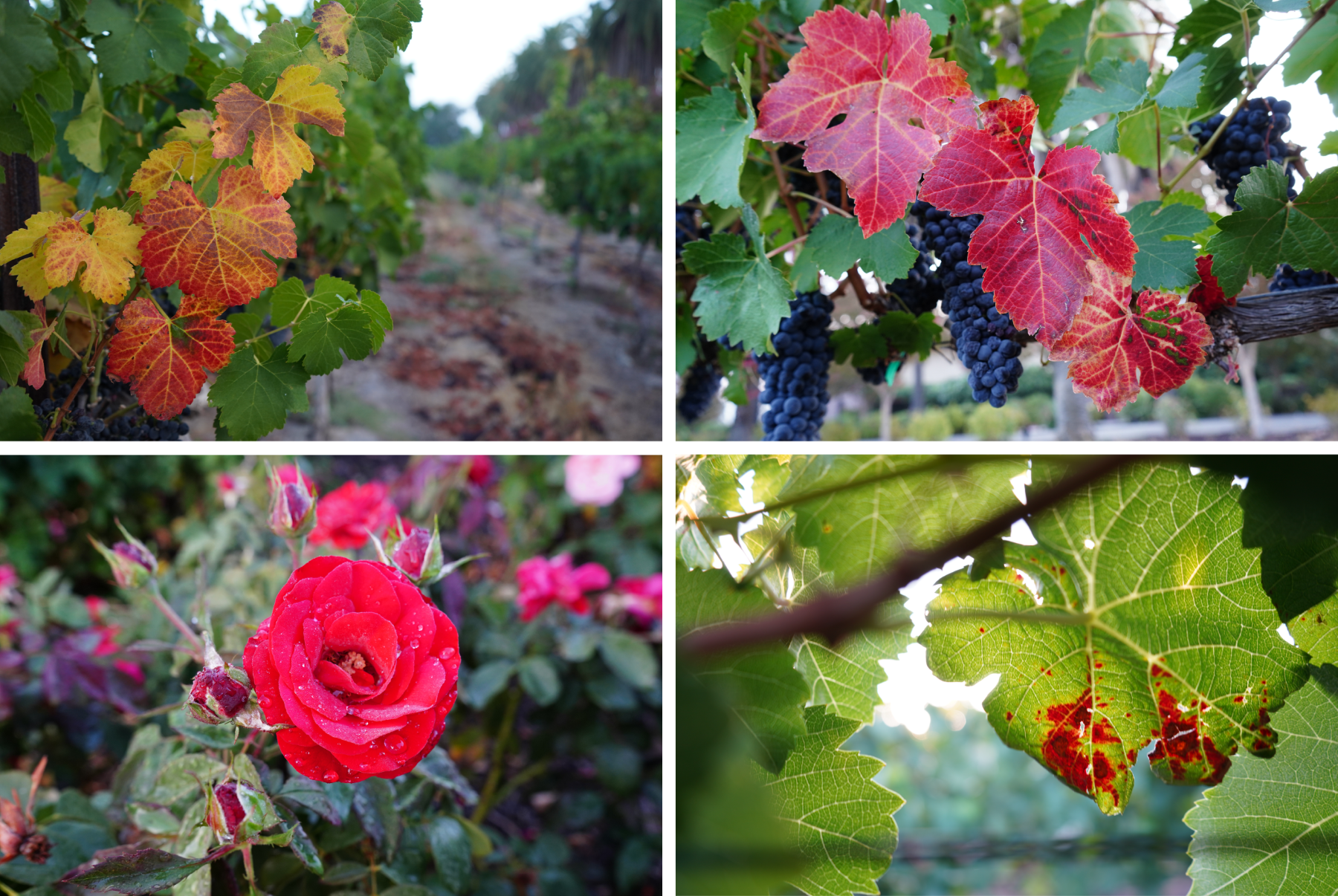 Autumn begins to touch the Estate with a crimson kiss.
Autumn begins to touch the Estate with a crimson kiss.
Do the Math, Drink the Wine
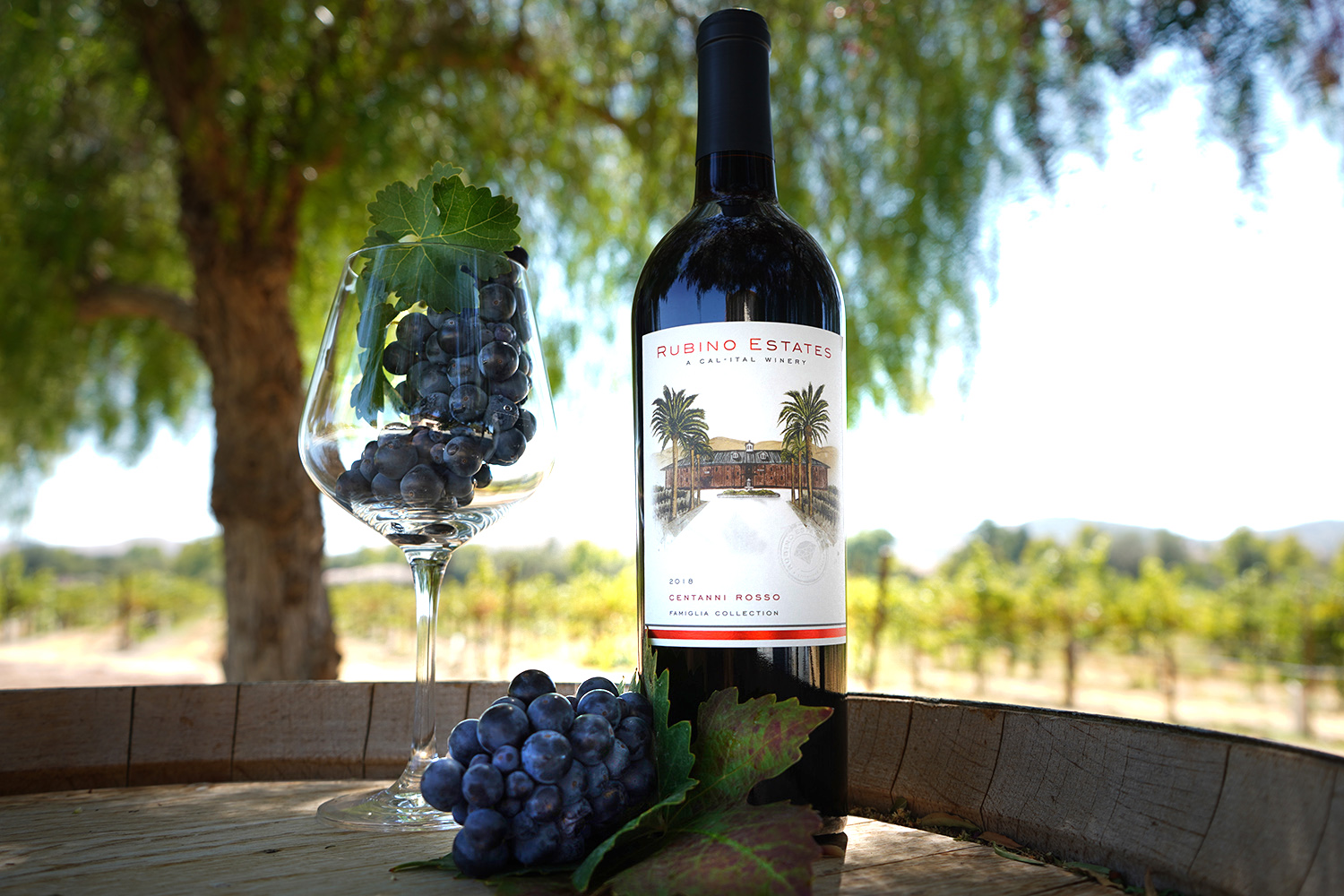 Harvest 2021 is officially underway here at Rubino Estates! We have begun to bring in the fruit for our white wines and Rosé, and we anticipate a busy and productive phase as our Winemaker and cellar team begin the process of turning grapes into the wine you know and love. This process involves taking tons (yes, literal tons) of grapes and transforming them into irresistible vino. For anyone wondering how much wine comes from a ton of grapes? We're glad you asked! Below, we've included some of our favorite "wine math" to answer all your burning questions.
Harvest 2021 is officially underway here at Rubino Estates! We have begun to bring in the fruit for our white wines and Rosé, and we anticipate a busy and productive phase as our Winemaker and cellar team begin the process of turning grapes into the wine you know and love. This process involves taking tons (yes, literal tons) of grapes and transforming them into irresistible vino. For anyone wondering how much wine comes from a ton of grapes? We're glad you asked! Below, we've included some of our favorite "wine math" to answer all your burning questions.
How many barrels and bottles is a ton?
One ton (2,000 pounds) of grapes produces about 756 bottles of wine, enough to fill 2.5 barrels. Each barrel of wine holds about 25 cases worth—this means that our standard barrels contain roughly 300 bottles in volume. Each of these barrels requires around 1200-1500 clusters to fill.
How many grape clusters do you need to make a bottle or a glass of wine?
It takes about 5 full clusters to make a bottle of wine, and each standard-sized bottle contains about 5 glasses of wine. Therefore, a cluster of grapes yields approximately one glass of wine. If each glass contains a cluster, then it should not be a difficult leap to discern the quantity of grapes in each glass.
So, how many grapes are in a glass of wine?
Alas, there is no straightforward answer. It depends on everything from varietal to winemaking technique. This answer isn't as satisfying as we'd like, however, so we'll go with a safe average of about 80 grapes in a glass of wine and 400 grapes in each bottle.
For any wine enthusiasts (or math enthusiasts) who want to know more about these numbers, it's important to note that all of the numbers listed above can actually have an immense amount of variability depending on a wide range of factors. The weight of grape clusters is influenced by variables such as sugar content or weather (grapes may be plump from rain). Furthermore, the number of individual grapes that go into a bottle or glass of wine will depend on the press processes performed by the winemaker, the thickness of the grape skin, and more. Now you know! Happy sipping!
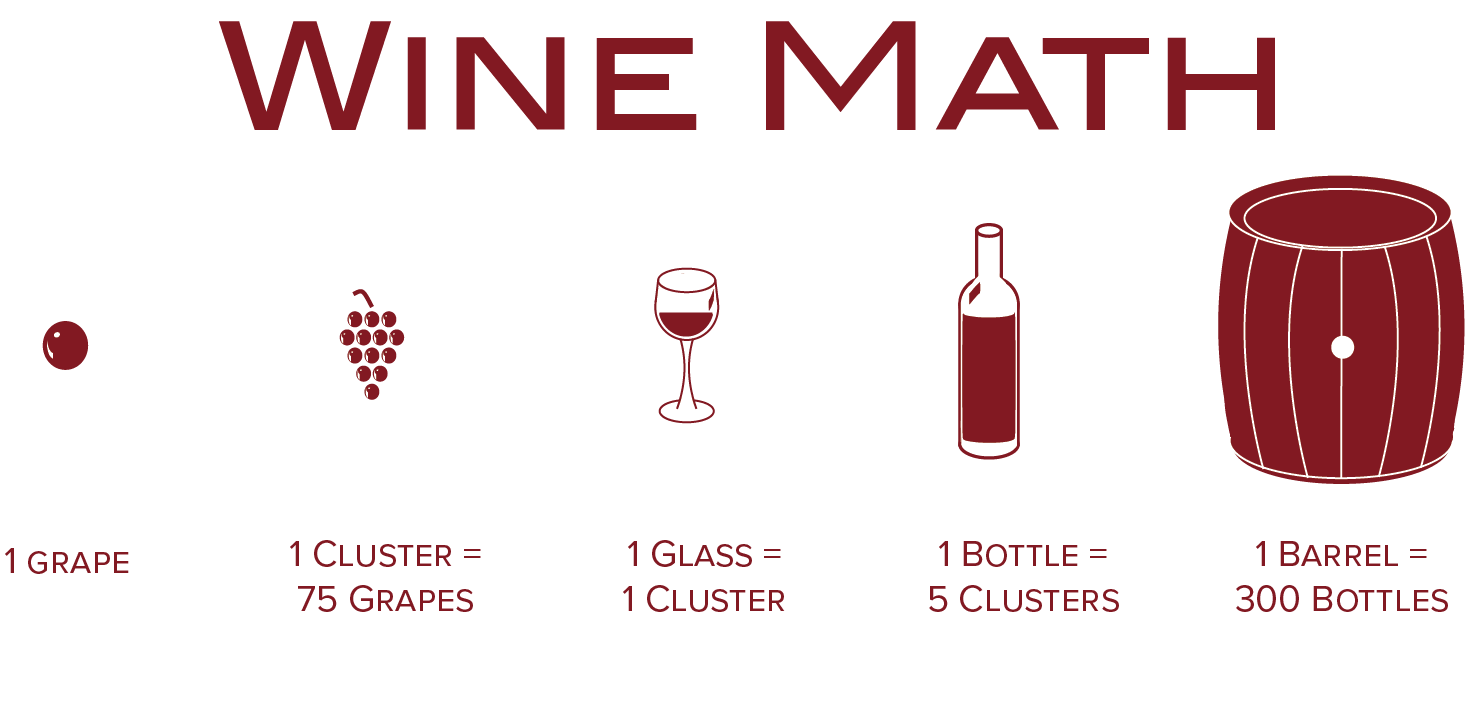
Bonus fact: assuming the figures listed above are correct, it takes roughly 120,000 grapes to fill a single barrel. It's worth it.
